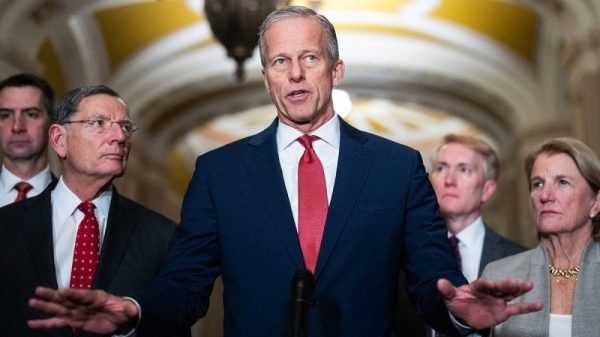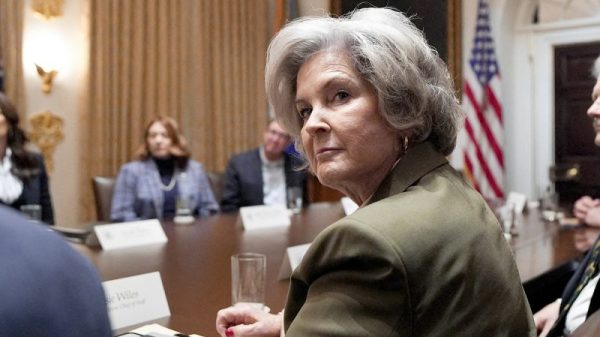There have been a total of eight previous editions of the Women’s World Cup, but this year’s tournament in Australia and New Zealand promises to look very different.
Since its inauguration in 1991, the competition has grown alongside the development of the women’s game which has seen a surge of popularity in recent years.
1. Co-hosts
This year will be the first time the Women’s World Cup will be hosted by two federations, New Zealand and Australia.
The games will be spread across 10 stadiums in nine different cities, with teams having to travel around to play their matches.
The five Australian cities – Sydney, Melbourne, Brisbane, Adelaide and Perth – will host 35 games, while the four New Zealand cities – Auckland, Hamilton, Wellington and Dunedin – will host 29.
Auckland’s Eden Park will host the opening game between New Zealand and Norway on July 20 and Sydney’s Stadium Australia will welcome crowds for the final on August 20.
Both countries have a rich sporting history but neither side have ever won the tournament, which has been dominated by the United States Women’s National Team (USWNT) – two-time defending champion and winner of four of the eight previous editions.
It will also be the first tournament held in the southern hemisphere, which may give the two host teams an advantage.
However, don’t be expecting the searing heat that Australia is famous for. It’s winter time in that part of the world and the weather is expected to be cool but comfortable – from the mid 50s to mid 70s Fahrenheit (low teens to mid 20s Celsius) – with rain expected, especially in matches held in New Zealand.
2. Largest tournament ever
For the first time, a total of 32 teams will vie for this year’s prize – the most countries to ever compete at the tournament.
The very first tournament held by China in 1991 only included 12 teams but that was soon expanded to 16 teams in 1999.
Organizers again grew the tournament in 2015 as 24 teams participated in the search for football’s biggest prize. But this year’s event will mirror the format used in the men’s World Cup for the first time.
The 32 nations have been divided into eight groups of four, with the top two of each going through to the knockout stages.
The extra games will allow more fans to watch the games and FIFA has said the tournament is on track to be the most attended standalone women’s sporting event in history.
FIFA confirmed that almost 1.4 million tickets had been sold for this year’s matches, already surpassing the 1,353,506 spectators who watched the 2015 World Cup in Canada.
“The future is women – and thanks to the fans for supporting what will be the greatest FIFA Women’s World Cup ever,” FIFA president Gianni Infantino told reporters last month.
“The momentum is building in the host countries and across the globe, and I look forward to seeing you there to witness the stars of women’s football shine on the world stage.”
Attendance records are also expected to be broken on the opening day.
Both host countries, New Zealand and Australia, are set to break their own national attendance records for women’s football games when they compete against Norway and Republic of Ireland respectively.
3. Eight debutants
The bumper number of teams also means space for eight nations who have never made an appearance at a World Cup finals before.
Haiti, Republic of Ireland, Morocco, Panama, Philippines, Portugal, Vietnam and Zambia will all make their debut later this month, breathing new life into the competition.
World No. 77 Zambia is the lowest-ranked team in the tournament and its achievement of reaching the finals has been rewarded with group games against Spain, Japan and Costa Rica.
Meanwhile, the Moroccan women’s team has continued the incredible rise of football in the country.
The Atlas Lionesses reached the final of the Women’s Africa Cup of Nations last year – a tournament hosted in the country – before being beaten by South Africa.
It comes as the men’s side reached the semifinals at Qatar 2022 – the first African nation to do so.
Haiti, ranked 53rd in the world, is another debutant which will be looking to upset the odds in Australia and New Zealand.
The country may not be known for its footballing prowess, but the women’s team does include one of the most exciting young players in the world.
Melchie Dumornay, 19, recently signed for Olympique Lyonnais – one of the best women’s teams in Europe – and is set to make an impact on the international stage.
“Having Melchie is key. She gives us the X factor,” Haiti coach Nicolas Delepine told FIFA+.
“When there’s not much at all between teams, you’re looking for her to do something.”
While the new additions can be seen as progress for the tournament, there are fears that it could lead to some one-sided matches.
In the 2019 edition, the USWNT beat Thailand 13-0 in a match which sparked debate over the disparity between nations – with some countries struggling to find resources to compete with the sport’s powerhouses.
All eyes will be on this year’s minnows who will be hoping to avoid such embarrassment on the global stage.
4. Historic payments
This year’s prize pot for the tournament will increase to $110 million – a nearly three-fold increase from 2019 and seven times more than in 2015 – and the 2023 edition will see every player at the Women’s World Cup receive compensation from FIFA.
The new payment model will see participants receive a set amount of money depending on how deep their team progresses into the tournament.
All players will receive $30,000 for qualifying for the group stages, with that amount doubled for those that make it into the Round of 16.
The amount rises at every level until the winners of the World Cup take home $270,000 each.
“Under this unprecedented new distribution model, each individual player at the FIFA Women’s World Cup 2023 can now fully rely on remuneration for their efforts as they progress through the tournament,” Infantino said.
“The global salary of women’s professional footballers is approximately $14,000 annually so the amounts allocated under this unprecedented new distribution model will have a real and meaningful impact on the lives and careers of these players.”
The payments will also extend to the teams, with national federations all receiving $1,560,000 for reaching the group stage.
The reward will rise throughout the tournament with the eventual champion taking home $4,290,000.
FIFPRO says it wants the new model to be a sign of things to come for women’s football.
“The key behind the success of this model is that it is universally applied, and it is fair, which is what female footballers tell us they want above all else,” FIFPRO President David Aganzo said.
“We see this is as only the beginning of what will be a transformational journey for the women’s professional football landscape together with FIFA.”





































